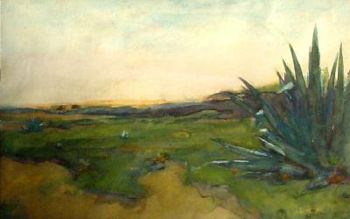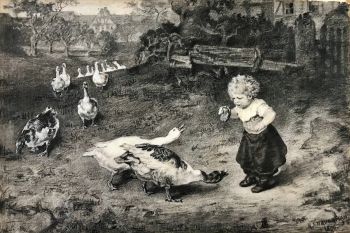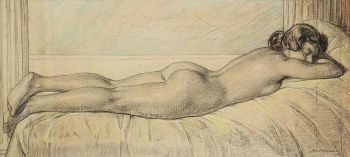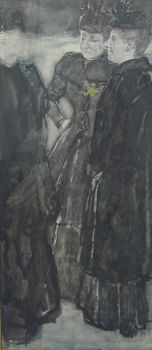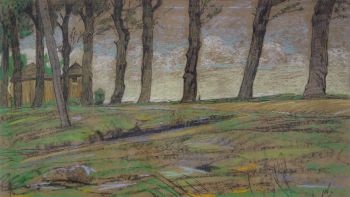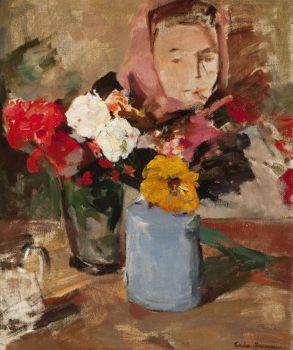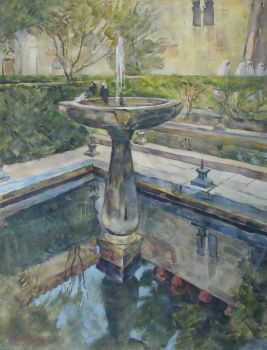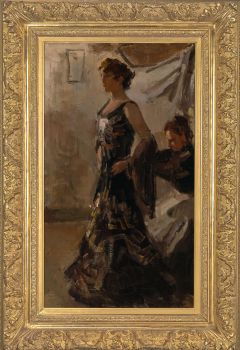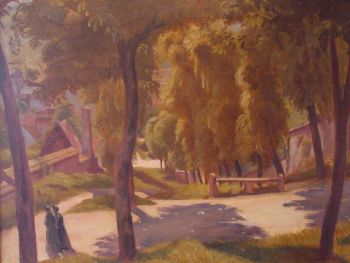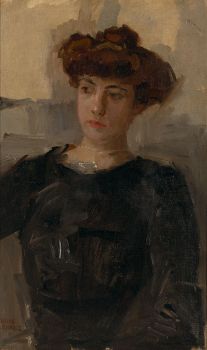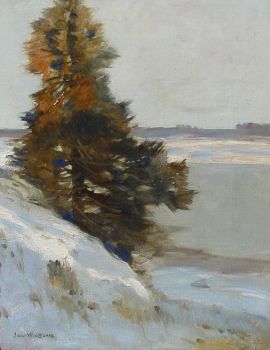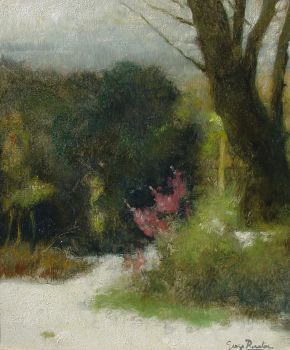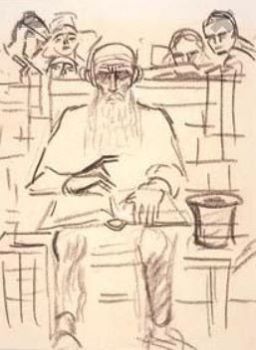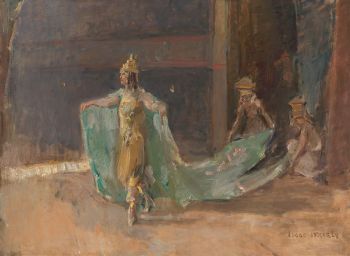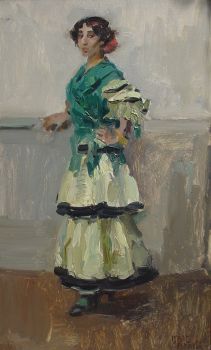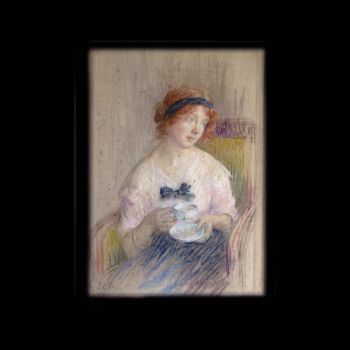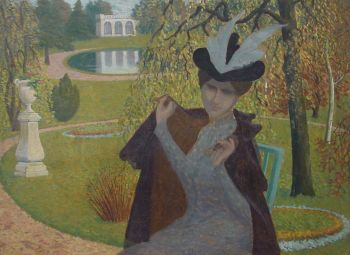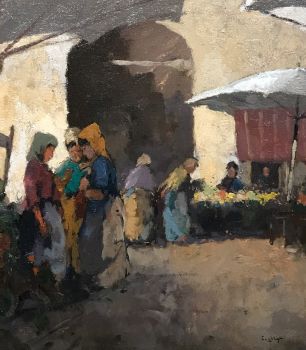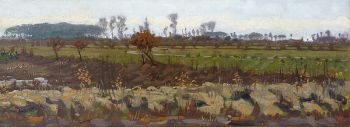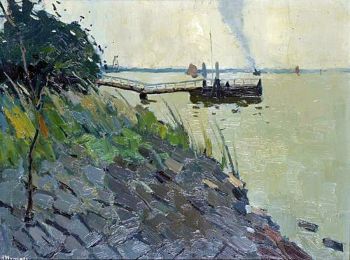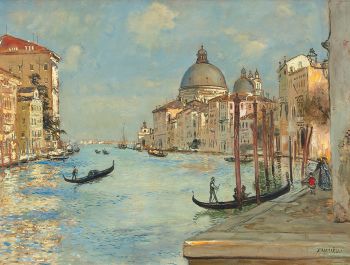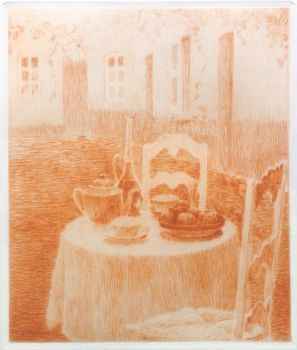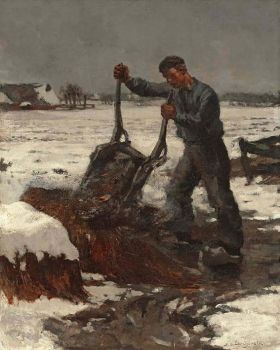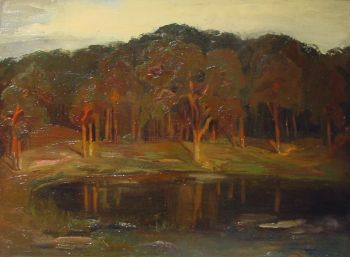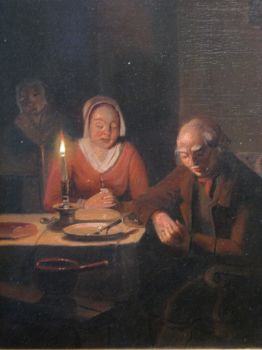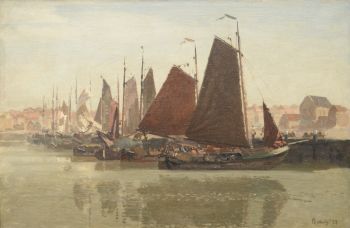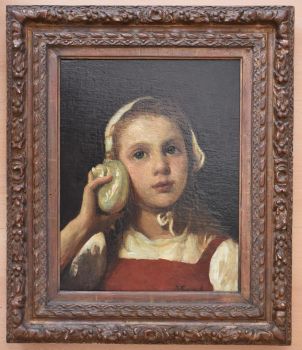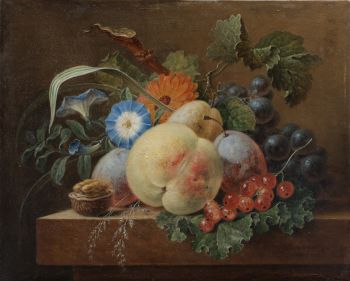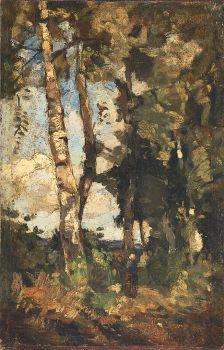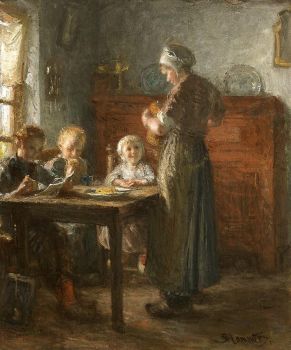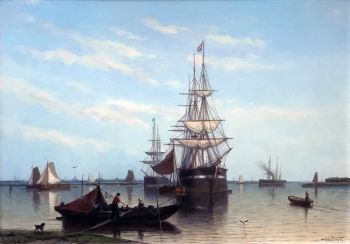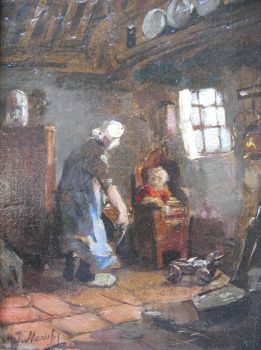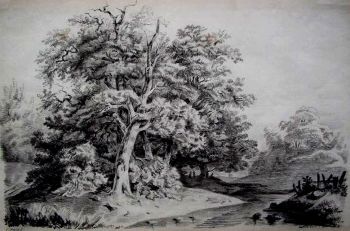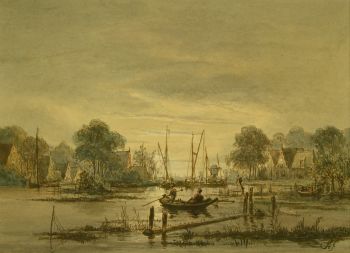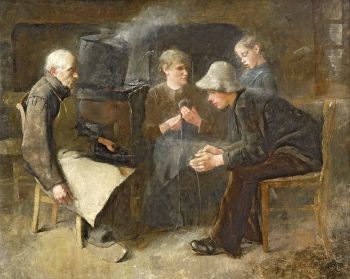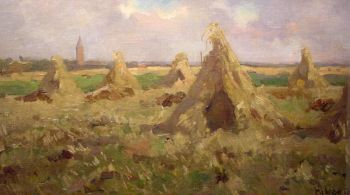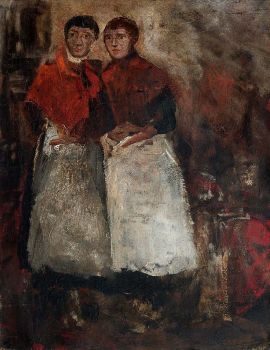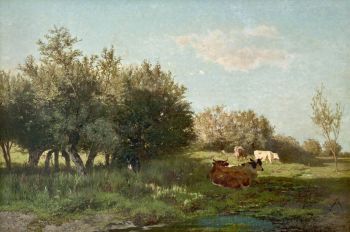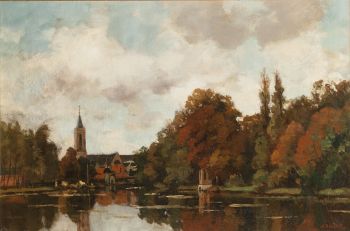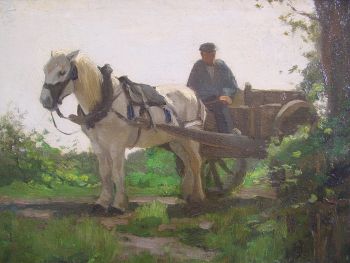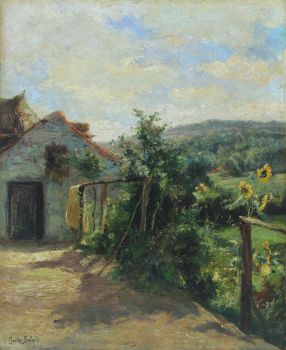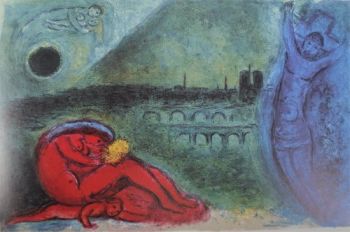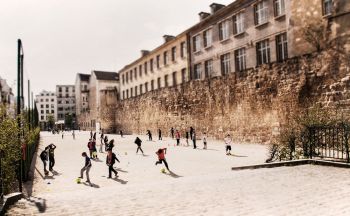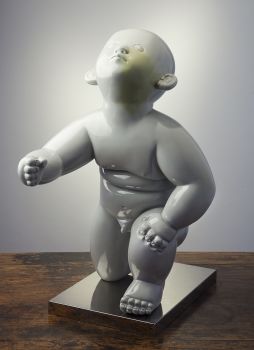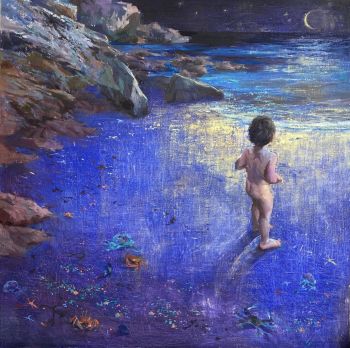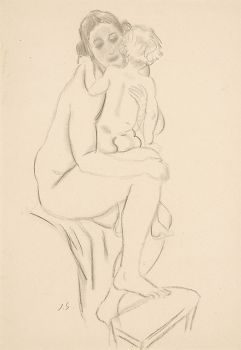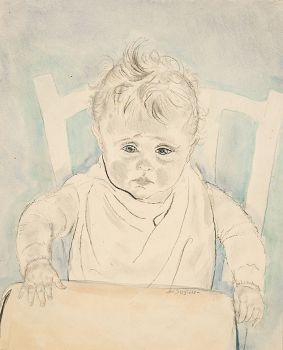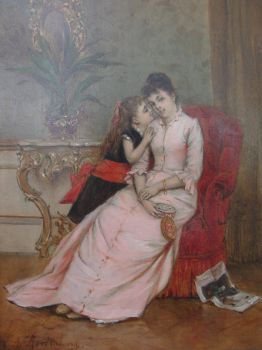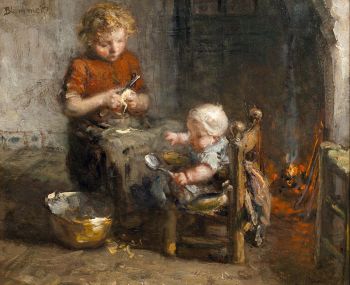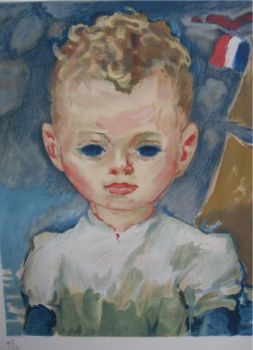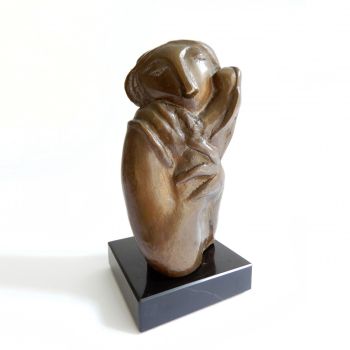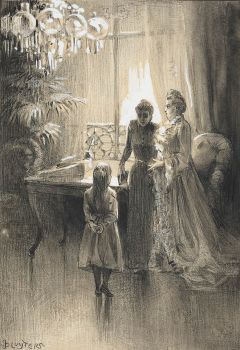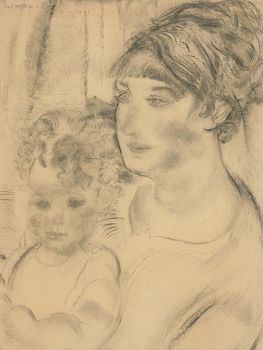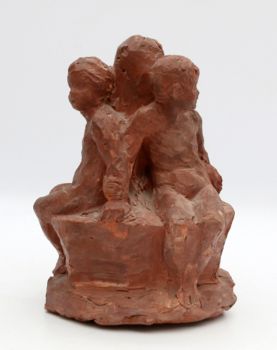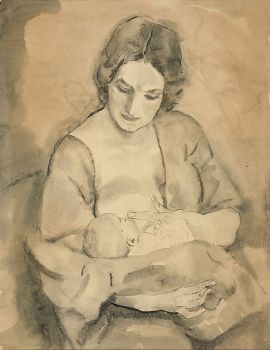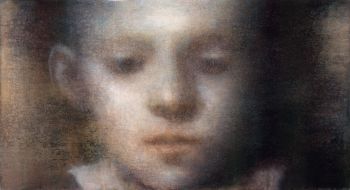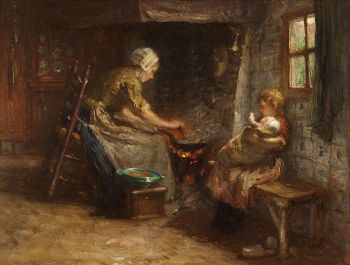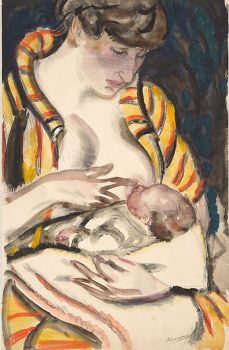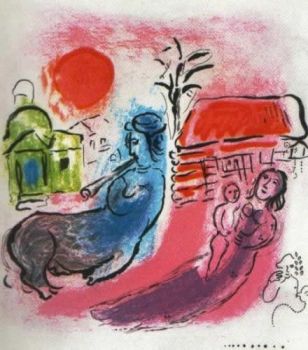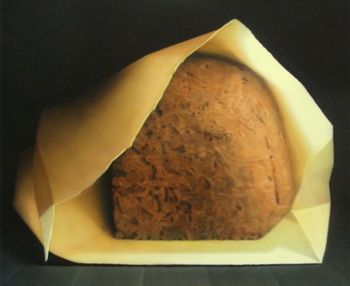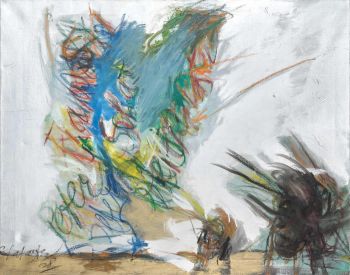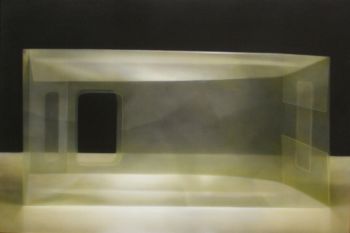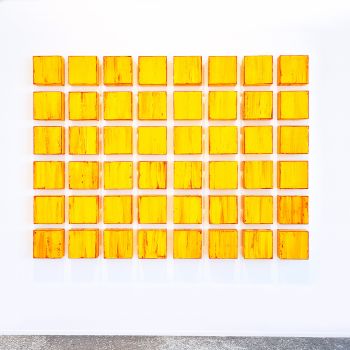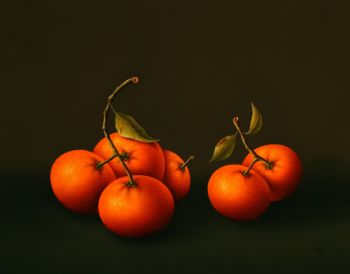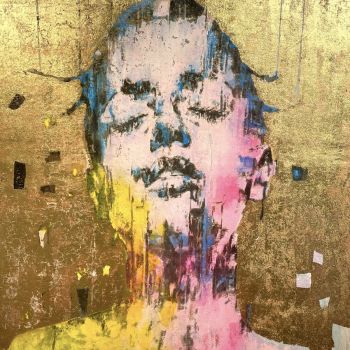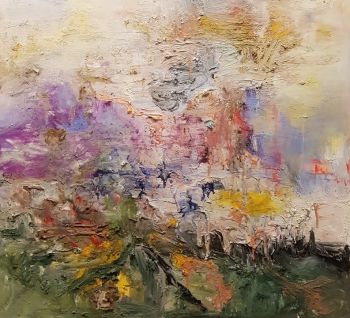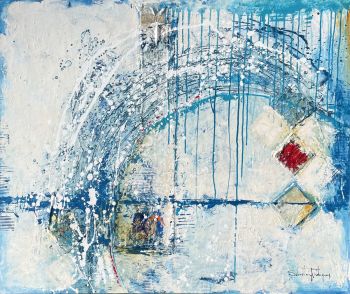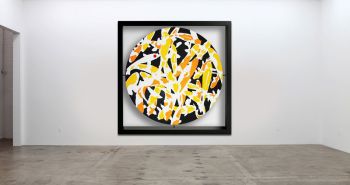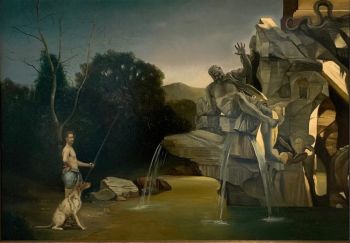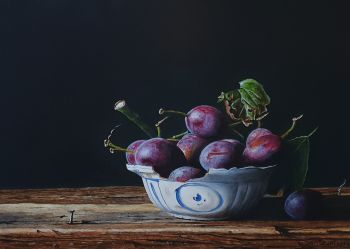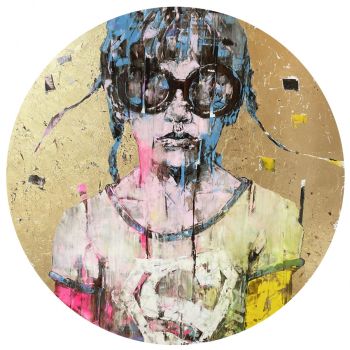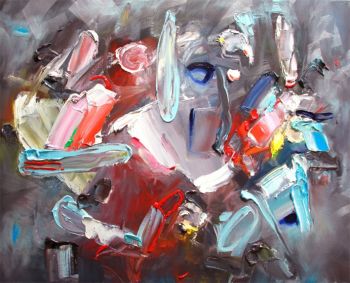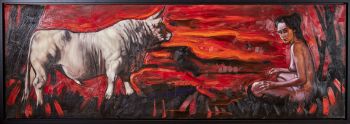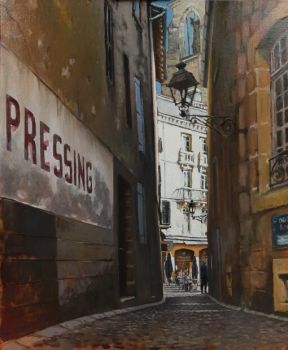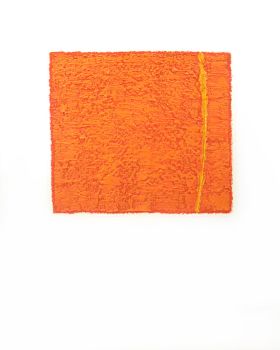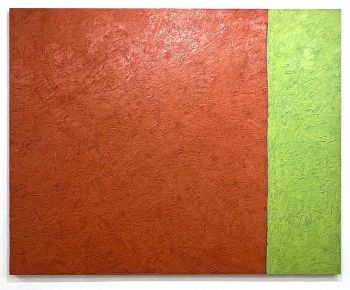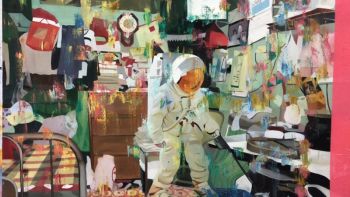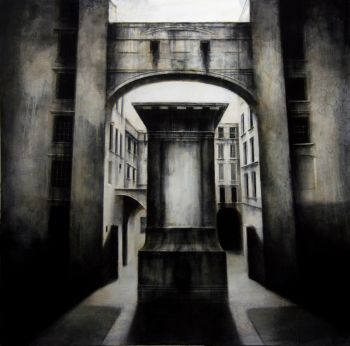Mother and child 1860
Hendrik J. Haverman
Pintura de aceitePintura
55 ⨯ 40 cm
ConditionExcellent
Actualmente no disponible a través de Gallerease
- Sobre la obra de arteHendrik Jan Haverman (1857-1928) belonged to the group of Dutch artists known as the' Tachtigers', meaning the 'Eighties', because these artists started their careers around the eighties of the nineteenth century. They were also called the 'Impressionists of Amsterdam'. Together with his collegues Jan Toorop, George Breitner and Isaac Israels Hendrik Haverman was one of the leading figures of this movement.
Oil on canvas, signed. Label at the backside ‘Stedelijk Museum Amsterdam’.
The painting was bought in 1907 by the Vereeniging tot het vormen van een Openbare Verzameling van Hedendaagsche Kunst te Amsterdam’ (Association to form a Public Collection of Contemporary Art in Amsterdam) from the auction of the Fine Arts Academy Fund, created in memory of (professor) August Allebé.
As the Association did not have a storage space (but a good relation with the Stedelijk Museum), the work has been stored in the museum depot for many years. But at a certain time the Association decided to dispose the work again, which resulted in selling this painting at the auctionhouse of Frederik Muller in April 1956. - Sobre el artista
Hendrik Johannes Haverman (23 de octubre de 1857, Amsterdam - 11 de agosto de 1928, La Haya) fue un artista holandés; conocido principalmente por sus dibujos de retratos.
Estudió en la Rijksakademie van beeldende kunsten de Ámsterdam y en las academias de arte de Amberes y Bruselas.
Entre aquellos con los que estudió estaban August Allebé y Hendrik Valkenburg (1826-1896). A su vez, dio clases particulares a Edmée Broers (1876-1955), Meta Cohen Gosschalk, Maria Adeline Alice Schweistal (1864-1950) y Pauline Suij; en un momento en que las mujeres no eran admitidas en la Rijksakademie.
En 1892 se le concedió una Subvención Real para el sostenimiento de su obra. La edición de 1901 de Camera Obscura, de Nicolaas Beets, contiene un retrato del autor realizado por Haverman.
También fue crítico de arte y escribió numerosos artículos para De Gids, la revista literaria holandesa más antigua.
En 1918, hubo una gran retrospectiva de sus obras en el Pulchri Studio de La Haya. La primera exposición de sus obras después de su muerte tuvo lugar en 2008 en Pygmalion Visual Arts en Maarssen.
Artwork details
Related artworks
- 1 - 4 / 6
Isaac Israels
"Een essayeuse bij het modehuis Hirsch"1865 - 1934
Precio a consultarStudio 2000 Art Gallery
Albert Clouard
Élégante à la cape (Elegant lady with a cloak)1866 - 1900
Precio a consultarKunsthandel Pygmalion
Raoul Hynckes
Riverview with scaffolding (near Kinderdijk, the Netherlands)1913 - 1924
Precio a consultarKunsthandel Pygmalion
1 - 4 / 24Gerard Bilders
The 'Uiterwaarden' at Oosterbeek (flood plains)1861
Precio a consultarStudio 2000 Art Gallery
1 - 4 / 24Jan Sluijters
interior with two ladies and a girl1900 - 1950
Precio a consultarStudio 2000 Art Gallery
Bernardus Johannes Blommers
Het bereiden van de maaltijd1870 - 1914
Precio a consultarStudio 2000 Art Gallery
1 - 4 / 24- 1 - 4 / 24


